A cook cooks, a cleaner cleans, a driver drives — but what does a product manager do?
The easy answer is that they manage products, but what exactly does this mean? Cooking, cleaning, and driving are super intuitive, but how exactly do you manage a product?
To dispel any confusion around this topic, I’ve prepared this breakdown of a product manager’s role and responsibilities, as well as:
- Commentary from a real-life product manager and tips, and
- Advice on how to become a product manager yourself.
Let’s get started.
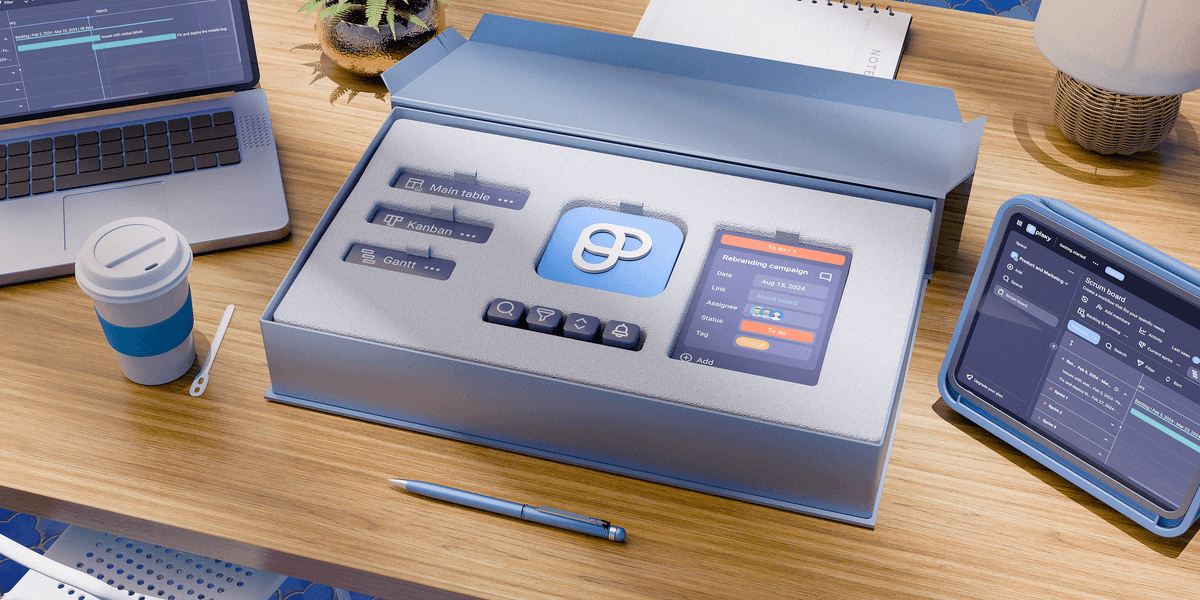
In this article:
What is a product manager?
A product manager is the one responsible for designing products and features that will fix your customer’s problems while also contributing toward the organization’s business objectives and goals.
In general, as a product manager, you set the product vision, determine the success criteria, and communicate this to the members of the cross-functional teams — such as the engineering teams — working on the products.
💡 PLAKY PRO TIP
What is cross-functional collaboration and how do you implement it in your organization? Find out in the post below:
Key product manager responsibilities
Instead of asking yourself, “What do product managers do?” — it’s better to approach this topic by considering what their key responsibilities are. What does the product manager job description say? What does their day-to-day workday look like?
To give an accurate description of what a product manager does, we’ve asked Dragana Nesic — the Product Manager for Plaky at CAKE.com — what the responsibilities of a product manager include. She summarized them like this:

- “Make sure product development is aligned with the product and company strategy,
- Keep the roadmap tidy, and communicate it in detail to other relevant teams (e.g., sales, support) when needed,
- Prepare features for development: do the research, work on the design, and define the requirements and acceptance criteria,
- Do the acceptance tests for upcoming features,
- Keep an eye on the feedback coming from different sources,
- Keep an eye on the development cycle of the feature, and give feedback if you think there’s room for improvement,
- Keep an eye on our help sections, making sure they are updated, and
- Keep an eye on the market and trends.”
This bulleted list already does a lot to demystify the process of product management. However, to make it even more concrete, we’ve also asked Dragana to walk us through what the day in the life of a product manager looks like.
Since her responsibilities cover quite a wide range of tasks — not all of which get addressed every day — she instead outlined what her typical work week looks like:

“My workday activities shift from day to day, depending on what my plan for any given week is. Usually, I have a plan that outlines the main goals I want to achieve for the week.
Sometimes, this includes working on a specific feature — other times, it’s more strategic work like working on the roadmap. Sometimes, it’s gathering feedback and doing analysis that will give input on how users use our features, which ones they use or don’t use, or which features they’d like to see in Plaky and why they need them.”
However, aside from these goal-of-the-week tasks, there are still some tasks that she performs every day:

“Regardless of the main focus for the week, every day I also give support to the development or QA team when needed, keep an eye on other open projects in the company (so that I can spot if they might impact Plaky) and of course, keep an eye on the market.“
💡 PLAKY PRO TIP
If you’re not sure what the difference between product management and project management is, check out this blog post where we outline the key differences:
Crucial product management skills
Now that you know what the key responsibilities of product managers are, we can extrapolate which skills you’d need to perform your duties.
The top 3 skills that product managers need to have are:
- Communication skills,
- Strategic thinking, and
- User empathy.
Let’s break these skills down one by one and see why they’re important.
Communication skills
Product managers find themselves at the crossroads of many departments — development, marketing, sales, support, content and technical writing, etc. In fact, the product team is a cross-functional team in itself.
I can give a bit of extra insight into this as I attend the Plaky roadmap meetings — just one of the many meetings Dragana holds — where she shares and explains changes to the product roadmap:
- What’s been accomplished since the previous meeting,
- What’s been delayed,
- What we can expect by the next meeting,
- When we can expect certain far-off features, etc.
Make a product roadmap in Plaky
Dragana also takes and answers questions regarding these changes and upcoming features from members of all previously mentioned teams, because we all need to coordinate our efforts around this roadmap.
The sales and support people want to know what features are coming so that they can use this information to attract new users or address their concerns. On the other hand, the marketing and content teams need to be ready to promote new features.
You could be a genius at strategic thinking, have the best ideas for popular features and how to prioritize them, and possess a keen insight into the wants and needs of your users — but it wouldn’t matter much if you couldn’t properly articulate this to all the other teams working on the product.
As a product manager, you don’t just decide on the product strategy and product vision. You also need to ensure other members of the product team understand these concepts so that they can contribute to the business goals the product is trying to achieve.
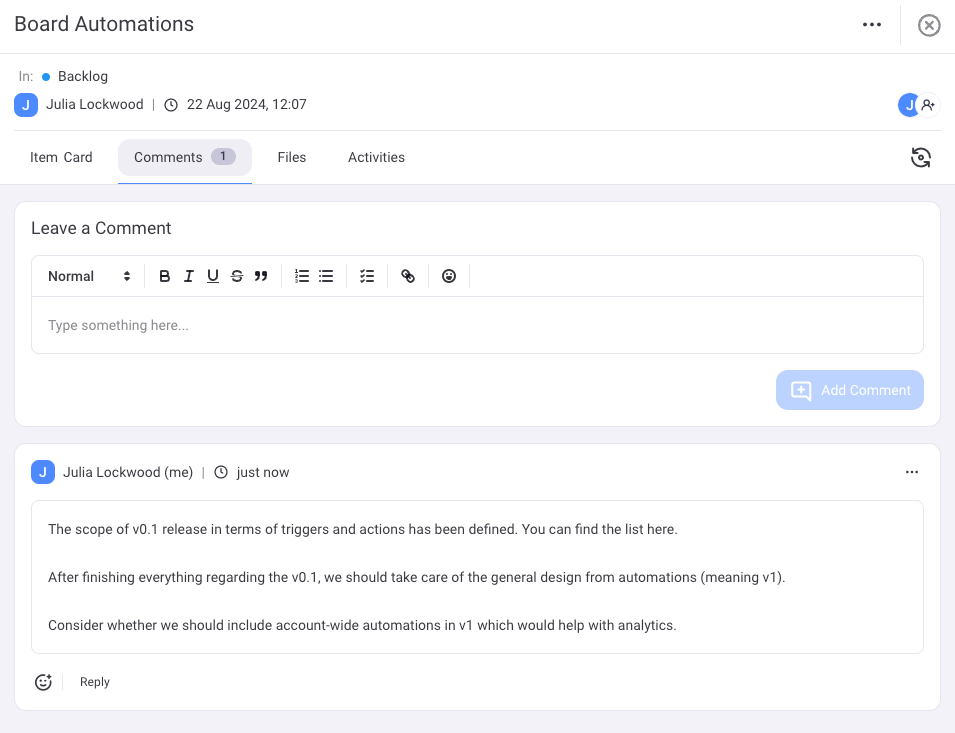
Strategic thinking
As mentioned, it’s the product manager’s job to decide on the product vision. So, you need to make sure that all the features you work on tie back to that vision (and you have to explain to others how it accomplishes this, tying it back to the need for great communication skills).
This also includes skills like prioritization. You won’t be able to make all the features you want (at least not at the same time), so you have to prioritize. How you prioritize one feature over another also ties back to the product vision that you set.
This balancing act of fixing the customer’s problems in a way that’s profitable is not easy to pull off.
User empathy
A great product manager is someone who acts as the user ambassador within the product development framework. After all, your job is to make sure that the product solves the customers’ problems.
When products fail, it’s often because they don’t aim to fix the customers’ problems. They either aim to fix the company’s problem (i.e., overcharge) — or don’t fix anybody’s problem at all (like the phone case hairbrush, which finally lets you brush your hair with your phone, I guess…).
In any case, you need to first understand the needs, feelings, and problems of your users/customers so that you can work on a problem that fixes them.
But, this isn’t all theoretical either. To decide what their customers need and make sure they’re targeting the right people, product managers do:
- Market research,
- Conversion rate optimization,
- A/B testing,
- Customer interviews,
- User research,
- Data analysis, and so much more.
Product managers are also often in charge of pricing, which means you need to realistically assess how much people would be willing to pay for your solution to their problems and use an appropriate pricing strategy.
What about management skills?
You might have noticed that management skills were not listed under the most important skills for product managers.
This isn’t because they’re not important, but because — within the context of product management — we first need to define what management skills are.
Typically, when a position has the word manager in it, we tend to equate it with general management (i.e., people management), at least to some extent. And, in many cases, this is correct. For example, project managers manage projects, which includes managing people.
However, the role of a product manager is different. You are only managing a product (or a part of a product, like a specific feature). You don’t manage people directly — so you don’t hire, fire, approve PTO, give employee performance reviews and negotiate salary increases, or anything similar that a general manager does.
Yes, you have to work closely with people from various teams and manage their expectations, but you are not their manager.
And just in case this still sounds confusing or you’re not sure how this would work in practice, we’ve asked Dragana this same question to get a real-life professional’s take on this conundrum:

“I do not manage people directly; however, I do produce tasks for the development team by defining the product feature requirements they will work on. So, we have to communicate a lot because I want to make sure that I pass the message correctly. Meaning, if they need to develop something, I try to communicate why we need to do that and which problems we would be solving with the feature.
I do this because I think it provides clarity and gives people a wider picture. I also encourage them to participate and challenge some decisions if they have some arguments — which turned out to be strongly welcomed by the development team, especially by the dev people with a stronger product mindset.”
So yes, product managers need management skills insofar as they need to work with and effectively coordinate multiple teams working on a product (which is no small feat!). But, they don’t need the typical middle-management skills that are more often associated with this phrase.
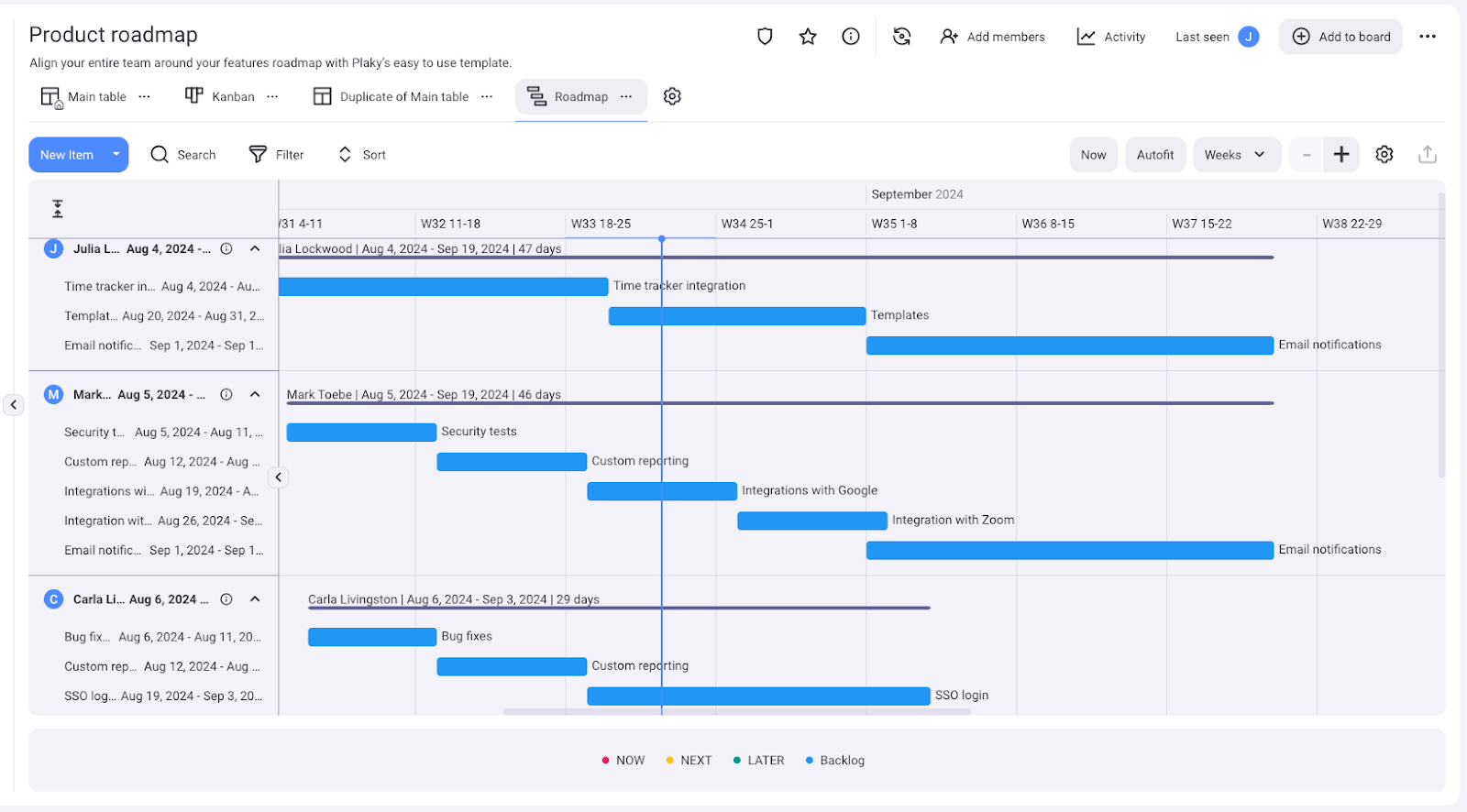
How to become a product manager
If you’re asking this question, then you’re a prospective product manager, and so it pains me to say that the thing employers value the most is — experience.
So, how do you get product management experience when you can’t become a product manager because you lack experience (it’s a real conundrum)?
Well, there are a couple of things you can do to boost your desirability as a hire.
Invest in product management education
For example, you can enroll in a product management course to get a relevant certificate.
Certificates go a long way, as they basically guarantee that you’ve completed a course designed to teach you relevant skills for a product manager (and then test those skills). It’s not experience on the job, but it’s something.
Likewise, a bachelor’s degree in business or marketing also helps a lot.
Transition into product management from an adjacent role
Even if you lack any certification, it’s possible to transition into the role of a product manager from another related role.
For example, some products require a UX product manager. So, a UX designer is an appealing prospect for this role, as long as they’ve got the soft skills like communication and strategic thinking down.
Remember, a product manager isn’t always responsible for managing the entire product — they sometimes manage features only. So, in addition to UX product managers, there are also:
- Technical Product Managers,
- Data Product Managers,
- B2B Product Managers,
- API Product Managers,
- Consumer Product Managers,
- AI Product Managers, and so on.
Experience relevant to these fields can increase your chances, even if it’s not experience directly managing a product.
Expert tip on getting a leg up as a new product manager
To help you out some more, we also asked Dragana what advice she would give to her younger self who’s just dipping her toes in the product management business. Her advice was not to overwhelm yourself with small-scale tasks, as it might make you lose sight of the bigger picture:

“Time management is really important. If you spend most (or all) of your time on operational tasks, you won’t have time to think about the wider picture. Instead, you should focus on maintaining a clear understanding of what the priorities are at any moment.”
💡 PLAKY PRO TIP
Check out the post below for an overview of the top 10 product management tools to consider using in 2025:
Streamline your product management skills with Plaky
Dragana is the product manager for Plaky, but she also uses Plaky for product management.
We asked her which Plaky features she uses the most to help her do her job. She highlighted the following:

- “Gantt chart grouped by person to see who’s working on what,
- Gantt chart grouped by priority to see the status of priority items,
- Filtering and sorting options that provide me with a quick insight into anything I need,
- Notifications and filters to quickly see where I was mentioned and reply, and
- The recently updated items section on the homepage, which lets me see how the tasks I’m following are being updated.
On a more personal note, I also like the option to subscribe myself to tasks I find interesting so that I can follow their development.”
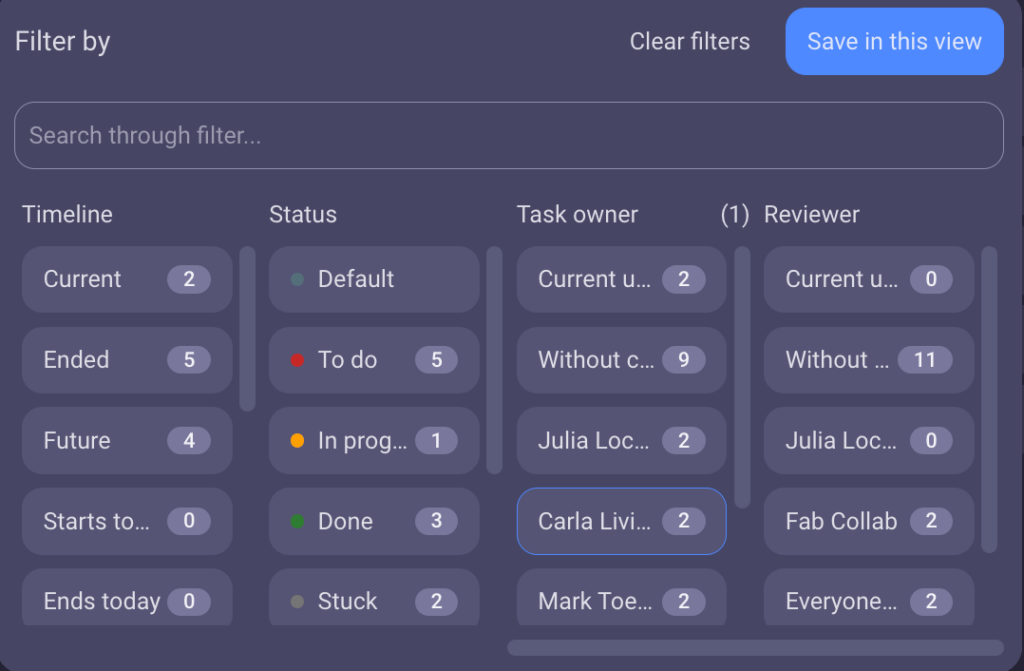
All the CAKE.com products are built, first and foremost, for in-house use. These are the tools that our teams need to develop, market, and support our SaaS products.
As you can see, Plaky helps product managers define tasks and keep track of everything that the product team is working on. And, thanks to its extensive customizability features, Plaky can support any kind of product or workflow. Dragana uses it to manage a SaaS product, but the tool is versatile enough to support any and all types of product management.
That said, if you don’t want to tinker with all the customization options, you can just jumpstart the task management process by using the free product roadmap template that’s been designed with product management in mind.
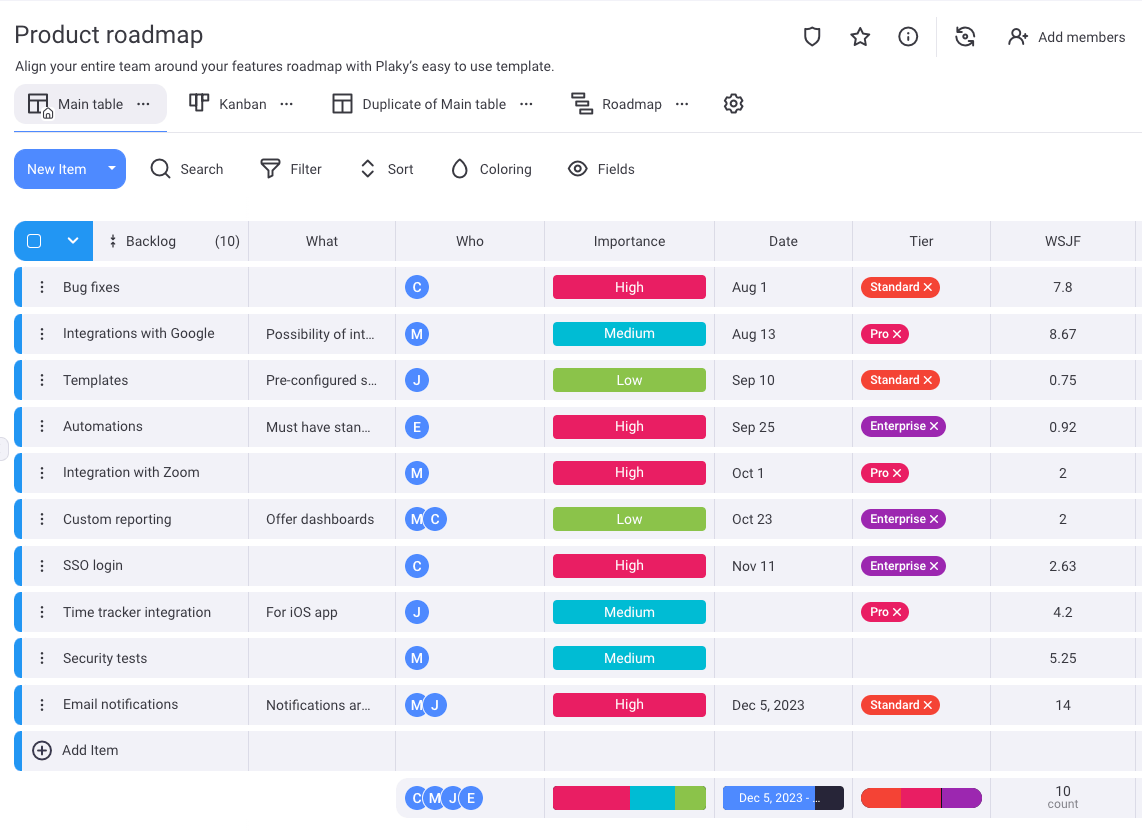
Take your product management to the next level with Plaky. Sign up for free today and try out all premium features for 14 days — no extra steps required.


